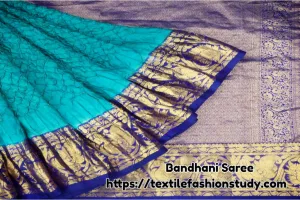Table of Contents
Cotton
The advantages and disadvantages of using cotton fabric are important for determining whether it is a strong, breathable, comfortable, and absorbent textile fiber. Cotton is a natural fiber, and it has great demand all over the world. However, it is grown all over the world because it is a renewable natural resource and an important raw material in the textile industry. Cotton yield depends on the number of bolls, weight per boll, and lint percentage, and the quality of cotton fiber can be determined by the length, strength, and fineness of the fiber. However, it needs to pass different stages from the cultivation firm to the consumer’s hands.
The cotton plant is cultivated in two ways: one is with the use of different chemicals, pesticides, or fertilizers. On the other hand, there is organic cotton fiber which is grown without the use of any chemicals, pesticides, or fertilizers, and the final cloth or fabric is unbleached and dyed with natural plant dyes to produce healthier fabrics.

Advantages and Disadvantages of Using Cotton Fabric
Cotton and its product, which is made of cotton, have lots of advantages and disadvantages when used in daily life. The following are the major advantages and disadvantages of cotton:
Benefits of Using Cotton Fabric
Cotton fabric is one of the best choices for daily use. The following are the advantages of cotton fabric uses:
Comfortable: Cotton fiber is more comfortable than other fibers. Moreover, it is a natural fiber, and the fabric, which is made of cotton, is a breathable fabric that is comfortable and lightweight. Furthermore, one can sleep better with cotton products.
Absorbent Ability: It is highly absorbent, and it is ideal for making different cotton materials such as towels and bedding.
Washable: Cotton is washable, easy to maintain, and can be machine washed and dried.
Durability: Another advantage of using cotton is its durability, which means it will last for a long time.
Inexpensive: Cotton is relatively inexpensive compared to other fabrics. However, it is an affordable fabric that is perfect for budget-conscious shoppers.
Dyeing and Printing: It is comparatively easy to dye and print cotton fiber, yarn, and fabric.
Color Retention: Cotton has good color retention ability.
Handle and Sew: Most of the fabrics are made of cotton yarn. The cloth is sewn to make a wearable product that is easy to handle and sew.
Farmers Support: Cotton cultivation is profitable, and it supports farmers and communities.
Smell: Cotton is odor-free.
Environment Friendly: It is a concern of the present world about environmental safety. It is easily biodegradable. So, the cotton product is environmentally friendly.

Disadvantages of Cotton Fabric Uses
Cotton has some drawbacks when used as a material. They are-
Shrinkage: The shrinkage properties of cotton are not good because it is prone to shrinking and fading when exposed to high temperatures.
Wrinkles: Cotton easily wrinkles, which can be difficult to remove.
Perspiration and Sun Effect: It becomes weak from perspiration and the sun’s effects.
Easily Burns: It is highly flammable and burns quickly.
Mildew Affect: Cotton materials are attacked by mildew if left damp. Moreover, it does not have enough ability to protect against mildew.
Strength: It is a natural fiber, and the fabric made from cotton is not as strong as synthetic fabrics.
Stains: Cotton becomes easily soiled because it is not very resistant to water or stains.
Warm Cloth: Cotton does not provide much warmth because it is not a good insulator.
Dry Properties: It is critical to understand how long it takes to dry a piece of fabric. However, cotton fabric is heavy and takes a long time to dry.
Crease Recovery: It contains poor elasticity, so it creases badly. Its crease recovery properties are not as good as others.
Heat Resistant: Cotton may not be ideal for activities such as gardening or cooking because it is not as heat-resistant as some other fabrics.
In sum, cotton is a strong, breathable, comfortable, and absorbent textile fiber. However, its use of large amounts of water and the potential use of pesticides and fertilizers during cultivation can damage the environment.
So, one can compare the pros and cons of cotton and its products when making a choice.





